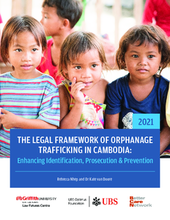The trafficking of children into orphanages in Cambodia was originally associated with fraudulent intercountry adoptions in the late 1990s. Orphanages were a transit destination where trafficked infants would be transferred, harboured and represented as orphans eligible for intercountry adoption. Each child would attract fees of up to USD $20,000 paid by adoptive parents. A number of stakeholders profit from this practice, including adoption agencies, brokers, buyers, child recruiters, officials involved in issuing fraudulent documentation and the directors of the institutions where children were harboured. Evidence of the widespread practice of trafficking of Cambodian children for intercountry adoption came to light in 2001. The industry was largely shut down as countries, most notably the US, closed their borders to adoptions from Cambodia. The primary US adoption agency and adoption broker at the centre of the largest racket were prosecuted in the US under visa fraud and money laundering charges. In Cambodia, human trafficking charges were brought against three orphanage staff involved in the trafficking; however, none progressed to prosecution, with charges in all three cases ‘quietly dropped’.
Orphanage trafficking occurs at the nexus of criminal law (human trafficking offences) and child protection regulation. This report examines the intersection of these two legal systems for the purpose of developing a strategy to identify and prosecute orphanage trafficking.

